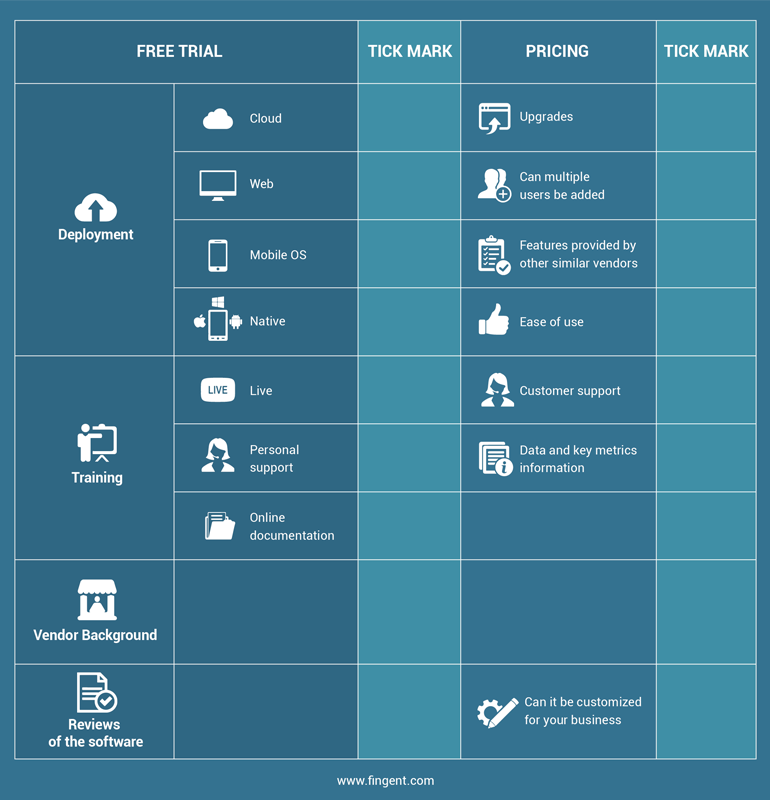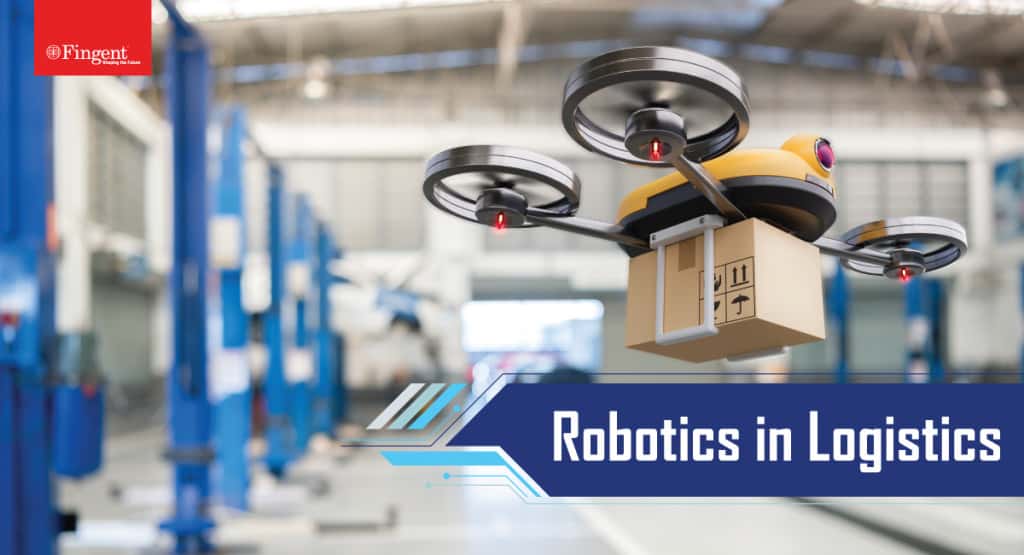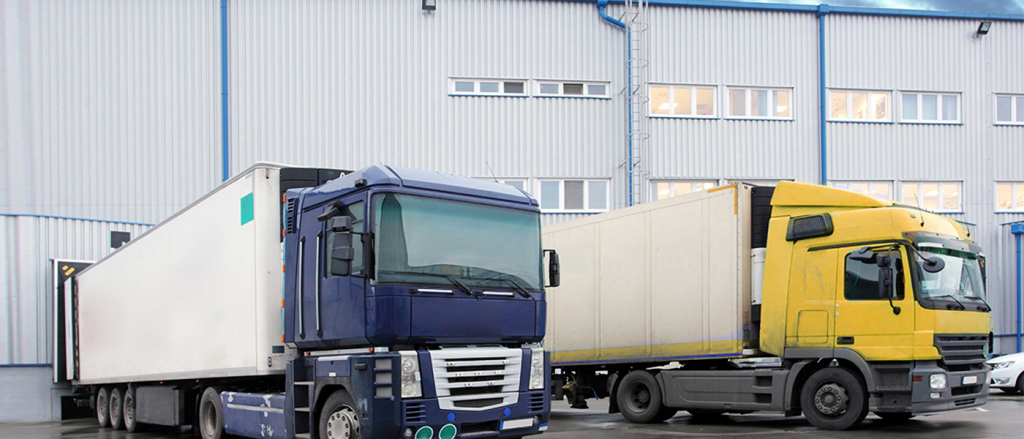Tag: Logistics Management System
Can Cloud based Logistics Platforms help you? The logistics game is changing fast! The industry is under immense pressure to improve its efficiency and reduce costs. That is its one shot at enhancing customer satisfaction. For years, traditional logistics management systems have struggled. Outdated technology slowed their processes. But now, technology brings a game changer for businesses: Cloud based Logistics Platforms!
With these smart systems, your company can get real-time insights and boost scalability. It will help optimize your supply chain to get maximum efficiency. Are you prepared to safeguard your operations for the future? Let’s get started.
What Is the Primary Purpose of Using Cloud Based Collaboration Tools in Supply Chains?
Cloud-based collaboration tools aim to enhance teamwork in supply chains. They let people share information quickly and easily, no matter where they are. This helps teams work together better, make decisions faster, and stay organized. These tools improve efficiency and lower costs.
Supply chains thrive on precision. But when communication slows and data scatters, mistakes happen. Research from Gartner reveals that bad data costs companies an estimated 15% of their revenue, with the average financial impact reaching $9.7 million per year. Here is where cloud-based solutions come into play.
They eliminate silos and bring everyone involved onto the same page. Cloud-based services offer immediate access to data. Logistics companies can prevent interruptions, reduce errors, and make quick, smart choices. They improve supplier collaboration, resulting in reduced bottlenecks and greater overall efficiency.
Struggling With Outdated, Disparate & Disconnected Logistics Systems? It’s Time To Up Your Game with Cloud-based Logistics Platforms!
Top Benefits of Cloud-Based Solutions for Logistics Management
Statistics indicate that many are switching to the cloud. The global cloud logistics market is expected to reach US$ 46,313.9 million by 2030, growing at a rate of 13.6% per year from 2025. This growth shows businesses are recognizing the benefits of Cloud-Based Solutions for Logistics Management. Here are some of those benefits:
-
Real-time tracking and Visibility
The Challenge
Logistics teams often lack information regarding the whereabouts of shipments. This results in setbacks, misplaced packages, and dissatisfied customers.
The Solution
Cloud-based services offer comprehensive shipment tracking featuring real-time GPS information. This gives logistics managers clear insights. It helps them optimize package routes and cut down delays in delivery. It also addresses any kinds of disruptions that we expect on delivery routes. Customers benefit from accurate ETAs and automated notifications. These features help build trust in the brand and boost satisfaction with services.
-
Scalability on Demand
The Challenge
Customer requirements change throughout the year. When demand spikes, logistics systems find it hard to cope with the sudden pressure. They have to scale operations but doing so without incurring large upfront costs becomes difficult to achieve.
The Solution
Cloud-based solutions help businesses to scale their operations easily. You do not need expensive hardware upgrades to achieve that. Cloud platforms can tackle it all. They handle adding fleet vehicles, expanding warehouses, and managing seasonal surges. This lets businesses grow as they need, without the stress of a fixed infrastructure.
-
Cost Savings
The Challenge
Inefficient logistics often lead to high operational costs. This happens due to manual errors, poor route planning, and fuel waste.
The Solution
Say goodbye to unnecessary expenses with cloud-based solutions. These systems provide AI-driven route optimization. Workflows are automated and the system works on predictive analytics. These processes help cut fuel use, reduce human errors, and improve warehouse storage.
Businesses can shift from costly, physical IT setups to affordable cloud services. This change helps free up capital. This lets companies invest in other growth initiatives that will help them over time.
-
Better Teamwork
The Challenge
When warehouses, drivers, suppliers, and customers don’t communicate well, it can cause problems in logistics. This often causes delays in the process.
The Solution
Cloud based logistics platforms integrate communication tools like instant messaging, automated alerts, and shared dashboards. This ensures that all stakeholders remain informed at all times. Enhanced communication results in more effective teamwork, faster reactions, and reduced misunderstandings. This results in a supply chain that is more coordinated and effective.
-
Security and Compliance
The Challenge
Companies deal with sensitive client information on a daily basis. Data breaches, fines, and not following industry rules don’t look good for security. This can put businesses at serious risk.
The Solution
Cloud-based platforms prioritize keeping data safe. They offer strong security features, like encrypted storage and multi-factor authentication. These protect against intruders. Their AI-driven threat detections safeguard sensitive data. Many of these platforms have built-in compliance tools. These tools help logistics companies follow important guidelines. This helps prevent costly violations.
Real-world Success Stories with Cloud Based Logistics
1. Turn Chaos into Control
The Challenge
Shipping companies lose a lot of time and money due to outdated logistics systems. Inefficient tracking systems and fleet management cause frequent delivery delays.
How Cloud-Based Tech Helps
By using a cloud based logistics platform, shipping companies can see their whole fleet in real time. This allows AI-powered route planning and an automated maintenance schedule.
The result? Delivery delays decrease significantly. Fuel use improves and becomes more efficient. Vehicles experience less wear and tear, which leads to substantial cost savings.
2. Warehouse Woes Fixed in E-commerce Giant
The Challenge
E-commerce players face frequent inventory mishaps. There are errors in fulfilment. Increasing order volumes become difficult to keep up with.
How Cloud-Based Tech Helps
A cloud-powered warehouse management system transforms operations by automating inventory tracking. The team can improve demand forecasting and streamline order fulfilment processes as a result. With real-time inventory insights, stock discrepancies drop. A large margin reduces customer delivery times. This helps grow clientele, strengthens brand loyalty and boosts repeat sales.
3. Cold Chain Logistics Enhanced
The Challenge
Global food distribution companies struggle with inconsistencies in temperature during transport. Due to this, many perishable goods are spoiled in transit. These goods cost a significant amount of money, and there are huge financial repercussions. Apart from that, many regulatory issues crop up.
How Cloud-Based Tech Helps
Integrating IoT-enabled cloud tracking helps monitor temperature and humidity in real-time. Automated alerts are sent to drivers and logistics managers. This helps them take quick action. This helps companies comply with food safety regulations and reduce waste.
4. Meeting Customer Demands Efficiently in the Retail Supply Chain
The Challenge
A national retail chain faced issues with delayed shipments and stock imbalances. This resulted in frequent out-of-stock scenarios and lost sales.
How Cloud-Based Tech Helps
A cloud-based supply chain management system enables real-time inventory tracking and automated restocking. An AI-driven forecasting system cuts down stockouts and boosts supply chain efficiency. Stores can keep shelves full, which keeps customers satisfied.
Discover Your Possibilities with Custom Logistics Software Development
How Fingent Helps Logistics Companies Stay Ahead
In today’s fast-paced world, there is no time for errors. Cloud based logistics platforms are a must if you want to stay relevant. Be it real-time tracking or automation and cost savings, the cloud has got your back. It is the key to staying competitive.
Fingent empowers logistics companies to transform their supply chain. We leverage cloud technology, AI analytics, and automation for better results.
We have worked with clients globally helping them reduce internal workloads by 50%, increase their customer base by 43% within 6 months, gain a 60% increase in employee satisfaction and more.
Stay up to date on what's new

Featured Blogs
Stay up to date on
what's new



Talk To Our Experts
The onset of globalization has encouraged business operations on an international scale. It offers companies the opportunity to reach new customers in new markets. Exposure to unknown markets and sometimes even known markets can expose businesses to greater competition and greater risk. However, efficient management of the supply chain can do away with many of these risks and put you on the path to success.
The challenges in the supply chain can include being unsure of the reliability of your suppliers, and their quality, cost, lead time, lot size, and more. Your business will surely profit if you had a way to monitor your supplies and the risks to your business.
Yes, clear visibility is crucial.
This is where custom software can benefit your business!
Custom software equips you with a way to collect, organize, and monitor the supplier-related information that is most meaningful to your business. This blog discusses which functions of the supply chain can be better managed with custom software and also talks about the benefits this can bring to your business.
Why Is Customized Supply Chain Management Software Important?
Efficient management of the supply chain depends primarily on data gathered at each stage of the supply chain process. The success of the business hinges on the way companies use those insights to make decisions that optimize demand, supply, inventory, and deliveries.
That is why custom software is essential to managing the supply chain. Custom software can enable organizations to make better use of their data as it gives structure to the information already in their possession.
Through the use of custom software solutions, companies can identify faults in their supply chain process. Such visibility can help them make better inventory decisions or inform their customers of the shipping status for their confirmed orders.
Essentially, custom software is instrumental in improving business operations and relationships with both customers and suppliers.
Read more: Build or Buy Logistic Software: An End To The Prolonged Discussion
Manage Key Supply Chain Functions with Custom Software
Every business is unique in its functions. A software can address the specific company challenges only when customized and tailor-built after crucially analyzing the workflows and industry pain points. Here are a few to look into.
- Raw material acquisition: Supply chain management is a journey, and purchasing is at the beginning of that journey. Purchasing includes sourcing raw materials and other resources. Custom software enables smooth coordination with suppliers to deliver the material without any delays requires.
- Planning and forecasting: The operations team must anticipate the possible market demand and the number of units for production. Over-anticipated demand can result in excess inventory costs. If it is underestimated, then the company will not be able to meet its customer demand and thus lose revenue. Custom solutions for planning and forecasting can help the operations team to anticipate demands more accurately.
- Warehouse arrangement: Supply chain management requires warehouse arrangements till it is shipped for delivery. If the products are delivered outside the country or state limits, there will also be a need for outstation warehouses. Custom software can optimize logistics to reach end-point delivery without any glitches.
Advantages Of Custom Software in Supply Chain Management
1. Increased transparency throughout the supply chain
Knowing exactly where your item is at any given time is important for all businesses as it allows you to sell the item before it even reaches your warehouse. Custom software can help you sell this way because it can pinpoint the exact location of your item and the time that it will reach your warehouse.
This will allow you to provide a guarantee to your customer that he will receive the product he purchased. Streamlining the supply chain will help achieve faster response times and increase customer loyalty.
2. Efficient inventory management
With the help of custom software, you can sell your item while it is on the move or as it is in the making. It can help you estimate how many items you must produce, eliminating excessive production.
3. Supplier management
You can keep a good relationship with your suppliers with custom software. Real-time data will allow you to know if you are running out of stock or if your tools and equipment need repair or replacement. This data will help you contact your suppliers immediately and thus minimize any potential delays.
You will also have details such as account receivables and other information at your fingertips when dealing with your suppliers. This will ensure that you are up to date with payments and discounts. As a result, you notice that your communication and cooperation with dealers and vendors improve considerably.
4. Streamline Processes
Custom software will create highly streamlined processes for supply chain management, especially for businesses that operate from different locations across the globe.
Fully customized software enables companies to accumulate all business data in one centralized location. Employees greatly benefit from this as they can now gain access to the latest versions of data, even if they are accessing it from multiple locations or branches.
5. Un-bottleneck your supply chain
Bottlenecks in the supply chain are a direct result of the ineffective system in place that does not allow teams in different locations to communicate and align statuses to fulfill overall objectives. Companies that experience such bottlenecks miss opportunities and lose customers because they are unable to provide what their customers want.
An unsatisfied customer walks out on you and straight into the open arms of your competition. If you are beginning to notice lower satisfaction rates, numerous complaints, or bad reviews from the customers, it is time to explore custom software that can give you a business-targeted approach to customer experience.
When a business looks to meet or exceed customer demands, they have to rely heavily on its supply chain. Internal bottlenecks can slow down the entire process and risk order fulfillment. To prevent such bottlenecks, a business must understand what causes them and how to prevent them.
Custom software can help a business identify such bottlenecks and thus help efficiently manage the supply chain.
Read more: Custom Fleet Management Software in Supply Chain
Save Money, Time, and Your Business!
It is clear that custom software comes with many benefits. It is also obvious that it saves money with time. While off-the-shelf software may come with a lower initial cost, investing in custom software will give more benefits to the supply chain management cycle. It improves sales functions and boosts productivity.
Custom software that is fully optimized to the supply chain will improve business function in a way no off-the-shelf software can. Fully optimizing the supply chain process can be lean and seamless through the use of custom software. If the business growth process is left unchecked by the off-the-shelf software solutions it can become highly chaotic. Custom software gives companies a higher level of control over all supply chain operations while taking control over the growth process.
A company that is digitally driven by custom software automatically enables a more proactive and open business. If this is what you want for your business, give us a call.
Our experts at Fingent thrive on creating custom solutions for our clients. They will be happy to talk through the game plan with you and show you how your business can excel with custom software for your supply chain.
Stay up to date on what's new

Featured Blogs
Stay up to date on
what's new



Talk To Our Experts
How Logistics Management Software and Technology Will Transform Businesses in 2021
Without logistics software management, Pfizer cannot become one of the world’s largest sterile injectables suppliers in 2021. Neither can they store, transport, and distribute the COVID-19 vaccine to multiple countries, maintaining ultra-low temperatures. Monitoring temperatures, optimizing delivery routes, managing cold storage, tracking vaccines in transit, overseeing distribution – all these prove that the logistics and supply chain sector has been at the forefront of tech disruption in 2021. Various governments are taking measures to expedite vaccine distribution to the masses; shoppers have increasingly moved to online shopping – 2021 is set to witness the increasing adoption of logistics management software.
Read more: 6 Tips for Logistics and Supply Chain Leaders to Plan COVID-19 Vaccine Distribution Strategies
The Impact of Technology in Logistics
Technology continues to disrupt logistics and supply chain processes by changing it altogether from its core. Research and Markets reports that the increasing use of IoT and emerging technologies across industries will accelerate Connected Logistics’s adoption. The Global Connected Logistics market is projected to grow at a CAGR of 17.5% during 2021 – 2026.
Consequently, logistics will become more refined and fast, changing the way materials, goods, freight, sales orders, inventory, and production are managed.
As efficiency and speed become the determining factors, logistics need to adopt a new approach to deal with the rising demand and complexity of processes. The industry needs a viable solution that manages the flow of things so that the right product reaches the customer within the specified time.
Logistics software adoption streamlines operations and removes process hassles. Organizations that invested in logistics management software have produced good outcomes with noticeable improvements in process, operations, and delivery.
This article attempts to explain all that you need to know about logistics management software, including:
- What is Logistics Management Software?
- Challenges in logistics management
- Pros of a having a logistics software
- 2021 trends that reshape logistics management
- Choosing the right Logistics Management Software
- Checklist of essentials in a Logistics Management Software
- How logistics software improves efficiency
- The future of supply chain
What is Logistics Management?
Logistics involves the flow of things from their point of origin to the point of consumption, usually general customers or businesses. The selection of vendors, transportation means, routes, and delivery methods constitute an essential part of logistical operations.
Logistics management is a part of the supply chain that uses planning and implementation to store and deliver goods and services to the customer. It coordinates several critical activities of the supply chain that range from product development to commercialization.
Typically a logistics management system includes the following:
- Inbound and outbound transportation management
- Warehouse management
- Fleet management
- Processing orders
- Inventory control
- Managing third-party logistics service providers
- Planning supply and demand
Watch Video: Top Challenges Faced by Logistic Management
Logistics management constitutes several functions such as production planning, sourcing, procurement, packaging, and dispatching. It also involves finding the suitable means to deliver goods and services to the end-user. Inbound and outbound traffic is vital in logistics management.
- Inbound logistics is a linear flow of raw materials from suppliers into a warehouse and then a production unit.
- Shifting the products from the warehouse inventory into the hands of the customers falls under outbound logistics.
An example of inbound and outbound logistics at play is that of a manufacturer of electronic goods, which requires several raw materials in the form of components, nuts, bolts, cables, casting, packaging cartons, etc., to build products.
Challenges in Logistics Management
Logistics is prone to several issues that occur primarily due to simple human errors or other factors. Weak decisions usually result in delays in the transport or delivery of goods, leading to customer dissatisfaction. Besides, another challenge that logistics face generally is in the safe transportation of goods. The goods can become damaged or faulty if not handled accordingly while in transit.
Customer demand has also become higher as they want more transparency in the delivery process. Moreover, logistics and supply chains are facing the still unsolved issue of cost control. The rise of fuel charges combined with a steep increase in energy, freight, and labor rates put further pressure on logistics providers.
Effective risk management and managing the relationship between the suppliers and partners are also vital. A reliable solution that covers all these individual challenges in logistics is thus becoming a necessity. The use of logistics management software (LMS) can streamline logistical operations and guide a logistics provider or business to deal with them appropriately.
What is Logistics Management Software?
Logistics Management Software (LMS) simplifies logistics operations by refining the production cycle and making it easier to access important information quickly. A logistics management software helps businesses manage the various processes that go into the production cycle from the delivery of raw materials to shipping the finished products to the consumers.
Logistics software has become broader in its scope and functionality to deal with a vast array of operations and processes. It shares similarities with supply chain management software (SCMS), which contains tools that help deal with transactions, processes, and suppliers. The functionality of a logistics management software extends to areas such as:
- Processing customer requests
- Processing purchase orders
- Inventory Management
- Suppliers Management
- Sales and Distribution
A logistics management software gets rid of all the conventional approaches like paperwork and spreadsheets to simplify management. It comes in three variations: warehouse management systems, enterprise resource planning systems, and integrated supply chain management suites.
Companies with an in-house logistics or supply chain division and third-party logistics providers utilize any of these different versions according to their requirements to efficiently manage their logistical and supply chain operations.
The Pros of having a Logistics Software
In logistics, handing over the process to a logistics management software has several advantages. With logistics management software, a company or 3PL (third-party logistics) provider could avail of the following benefits.
- Refine Transportation: Transportation is a crucial area of logistics. It incurs the most charges in the form of fuel, energy, labor, motorway tolls, and shipping fees. Relying on logistics software can help manage the various transportation means and leverage the operational data for process automation. Logistics management software makes it easy to analyze data and make relevant decisions for reducing costs maximizing efficiency.
- Faster Delivery: The logistics and supply chain industry faces several issues that affect delivery and lead to delays. By incorporating logistics software, businesses can rapidly deliver their products to customers. A logistics management software can improve delivery speed by making meaningful interventions in the production cycle and choosing the suitable carrier. It ultimately reduces shipping delays to a great extent.
- Minimize Human Errors: Another notable advantage of having logistics management software is in reducing human error. Manual analysis of vast quantities of transportation data is difficult, time-consuming, and prone to errors. A logistics software can process these data without any mistakes in less time, seamlessly pushing forward the operations with minimal/nil delays.
- Automates Functions: Process Automation is a tremendous boon of logistics software integration. Certain functions like creating shipment routes, load planning, and tendering of load to carriers are easily automated and managed by using logistics software. Moreover, it eliminates paperwork, which helps deal with the processes efficiently and timely.
- Reduce Costs: Logistics software can automatically compare different shipping services, delivery agents, and transportation methods to find the least pricing ones. The other way logistics software reduces costs is by lowering the expedited shipments through improved shipment planning.
Read more: How Transportation Management Systems Benefit Third Party Logistics (3PL) Service Providers
2021 Trends that Reshape Logistics Management
The demand for logistics software management has peaked with the widespread popularity of e-commerce in 2021. The onset of COVID-19 is also a reason behind the peak in demand for logistics technology. As a result, logistics is constantly evolving to accommodate each industry’s rising requests that depend on it. One area where logistics has transformed is the digitization of its processes and resources. In 2021, the industry is expected to embrace the cloud, mobile, and emerging tech to transform logistics operations. Here are some of the top tech trends that will influence logistics and supply chain in 2021.
1. Artificial Intelligence
Logistics companies will use AI to identify patterns in data and churn insights. It will help advance operations such as intelligent transportation, route optimization, demand forecasting, budget planning, etc. McKinsey reports that AI-driven logistics optimization can reduce costs through real-time forecasts and behavioral coaching. The potential incremental value of AI in the logistics and transportation industry (89%) will be more than other analytics techniques.
Read more: How AI is Reshaping the Supply-Chain and Logistics Industry
2. Warehouse Robotics
Over the last few decades, innovative logistic robotic companies have worked hard to mesh AI and machine learning, better sensors and response capabilities, warehouse management software, or logistics management software. Recently, warehouse robotics in the supply chain has picked up pace exponentially. There has been colossal funding and investment in the industry. For example, Alibaba invested $15 billion into robotic logistics infrastructure, and Google invested $500 million into automated logistics for JD. It is also estimated that the global market for warehouse robotics in the supply chain will reach a market value of $22.4 billion by the end of 2021.
Read more: How Robotics in Logistics Helps Improve Supply Chain Efficiency
3. Cloud Computing
Cloud integrated logistics management software allows having real-time price updates, inventory, and tracking. Cloud-based logistics software enables real-time accuracy and 360-degree management of processes and systems. You can track a product through its lifecycle, right from ordering to distribution. It allows to significantly cut down the costs of lost products, missing deliveries, locate a shipment at any stage of transport, and reroute a misdirected shipment. Cloud-based logistics software allows everyone in a trade network to communicate and share data in real-time, make decisions quickly, and scale on-demand.
4. Contactless last-mile delivery
In a pandemic-troubled world, contactless delivery is more critical than ever. eCommerce companies and carriers face increasing pressure due to the surge in online shopping. It’s crucial to stay agile by ensuring business continuity. At the same time, it is also vital to remain safe and meet delivery needs. Electronic parcel lockers, contactless parcel delivery and collection, and self-service pick-up automate delivery processes to reduce physical interactions between customers and delivery agents.
Watch video: Custom Web Application Developed to Enable Smarter Locker Management
Custom logistics software applications can help fulfill the increasing demand for last-mile delivery. Fingent helps build healthy tech partnership ecosystems to ensure uninterrupted supply and distribution of your products and services.
5. Blockchain
Blockchain, also known as the distributed ledger technology, offers the ability to record transactions between parties securely and permanently. The shared and secured databases enabled by blockchain helps in avoiding intermediaries and third parties that verify, record, and coordinate transactions in a supply chain. Blockchain helps increase the traceability of the material supply chain, improve the credibility and trust of shared data, digitize physical assets like contracts and critical documents, streamline administrative processes, reduce costs, and enable effective auditing of supply chain data.
Example of blockchain application in logistics: The international logistics giant DHL uses blockchain-based serialization of pharmaceutical drugs and products to ensure that:
- the products come only from legitimate manufacturers,
- are not counterfeit, and
- are adequately tracked and traced through their journey from origin to consumption.
6. Predictive Analytics
The emergence of sensor technologies and AI has contributed heavily to the rapid growth of predictive maintenance in the logistics industry. Supply chain leaders want to utilize data effectively to optimize predictive maintenance, forecast demands, adjust inventory levels, improve cold chain transportation, and protect the integrity of the supply chain. Smart and optimized data management through predictive analytics and AI allow logistics providers to refine and transform the supply chain in 2021.
Opting for the right Logistics Management Software
With the trends shifting logistics management in a progressive direction, the need for software solutions in the field has become indispensable. Businesses, whether focussing on e-commerce or delivering services, can benefit from having logistics management software. However, the real question is finding the right kind of logistics software since the requirements vary for each business.
Read more: How to Pick the Right Logistics Management Software
A checklist of essentials in a Logistics Management Software
Before settling on software for logistics management, it is vital to understand the requirements and challenges a business faces daily. Carrying out a detailed analysis can help identify deficiencies in the existing logistical operations of a business. Besides that, it can suggest measures to redeem any discovered shortcomings in the cycle.
When deciding on logistics management software, there are several essential factors to consider. Firstly, it should contain a basic set of functions that can aid in simple logistical management operations.
Besides that, numerous other things should also be present in the software to tackle the wide base of a business’s logistical operations and processes.
Some of the key features to look for in a potential LMS are:
- Compatible Multi-Client Architecture: A logistics software that comes with multi-client architecture support is necessary if a business handles multiple customers. Software with inventory and purchase orders has more emphasis since it deals with several customers simultaneously or in different phases.
- Forecasting: The ability to forecast is a needed trait in logistics and supply chain management software since it can bridge gaps in supply and demand by enhancing the business processes. Demand, supply, and price forecasting can help supply chain management with proper production scheduling, better customer satisfaction, and minimized out-of-stock scenarios.
- Finance Integration: Having tools that integrate the supply chain’s financial side is another critical software requirement. Vital financial aspects like general ledger, account payables, and receivables can help manage the bookkeeping and records of transactions conveniently when included in logistics software.
- Inventory Tracking: Having an inbuilt inventory tracking feature can make logistics management software more dependable. Logistics involves transactions of various kinds. An inventory control feature enables easier processing while ensuring that the customer gets the invoice on time.
- Customizable and Streamlined Interface: A good logistics management software should contain a streamlined interface that allows for effortless navigation across its chief functions. A customizable logistics software can easily accommodate the unique infrastructure and methods implemented by a business.
- CRM: Logistics software should also cover the customer side. A CRM embedded logistics software allows the customers to know the status of their deliveries. For both inbound and outbound logistics, CRM can answer the customers’ queries and supply them with relevant information and adjustments to the delivery.
- Bill of Lading Creation: As a critical document in the shipping and freight chain, looking for a logistics system that can generate the bill of lading is recommended. This can make it easier to create the bill of lading receipts. It facilitates the seamless exchange of goods under the consignee of the shipper and the logistics company.
Refer the chart below to get a grip on the overall profile of any software logistics management:

With logistics pushed to the forefront of business operations, leveraging the right technology can make your business compatible with the changing environment.
Outsourcing to a software development vendor will help deploy scalable software for logistics management into your entire supply chain operations. A global software solutions provider like Fingent can give you the advantage of custom logistics solutions built solely based on your requirements.
How logistics software improves efficiency
Logistics management software guarantees more efficiency and control over the logistical and supply chain operations of a business. It means simply substituting the existing manual methods with a software-centric solution. The array of features in a logistics system can refine the entire logistics cycle right from its center. For owners, vendors, and the end customers, using an LSM (Logistics Software management) model opens up improved collaboration, which is the essence of effective logistics management.
Opt for logistics software requires considering all the criteria mentioned above. For a business, it involves addressing their needs and then choosing one that wraps around their existing processes. By integrating an LMS into their operations, companies could reduce their turnaround times and streamline the overall cycle of planning and delivery while keeping up with the customers’ requirements.
Read more: Build or Buy Logistics Software – An End To The Prolonged Discussion
Transitioning into Cloud-Based SaaS: The Future of Supply Chain
With cloud computing gaining momentum in 2021, a whole new way of processing data is unveiled. The tech innovations in 2021 have influenced the supply chain and logistics operations. Increased adoption of supply chain and logistics solutions in 2021 will lead to a shift from the on-premise model to the SaaS model.
Predictions estimate that a subscription-based SaaS model will dominate supply chain management in 2021 and beyond. Adopting a cloud-based supply chain solution offers benefits in the form of flexibility, robustness, and affordability. Free and open-source software adoption has made the Cloud the primary choice for logistics providers and organizations worldwide.
Cloud-based SaaS supply chain solutions offer numerous benefits. It gives a comprehensive outlook on the overall operations in logistics by making processes more transparent and collaborative. Implementing a cloud system reduces the upfront and operating costs. It also offers the ability to scale up with the business needs and enhances supply chain efficiency.
To sum up,
Opting for a logistics solution is one step to simplifying the entire cycle of logistical and supply chain operations. Effective management of each process from procurement to delivery requires a custom logistics management solution that can accommodate each provider’s demands. For instance, an organization lacking an in-house logistics department needs a software management tool that can wrap around their existing methodology and improve it.
By partnering with a vendor specializing in software development, businesses can deploy logistics management software tailored to their requirements. Pioneers in custom software development like Fingent can assist companies from wholesalers to distributors to e-commerce with the advantage of custom logistic solutions. Get in touch with us to spearhead your operations swiftly and efficiently.
Simplify job scheduling and dispatching
Intuitive scheduler to help assign jobs to field agents through simple drag and drop actions based on workload and availability.
Try ReachOutStay up to date on what's new

Featured Blogs
Stay up to date on
what's new



Talk To Our Experts
The logistics sector has become a key performance indicator of the economy. Various estimates put the total market size of the logistics sector in a country on an average to be between USD 90-125 billion!
The Current Sketch of the Logistics Market Place
Logistics and transportation managers often find the movement of freight between trade partners an uphill battle! It is necessary to make the transit easier, cheaper, and more efficient. The freight managers turn to Transportation Management Systems (TMS) for a smooth operation. Over the last 3 decades, such systems have evolved significantly and are typically available as standalone software packages, as part of a larger Enterprise Resource Planning (ERP) solution, or in Software-as-a-Service (SaaS) formats.
Logistics cost is 9% of the GDP in the U.S. This shows an increasing demand on the logistics sector to provide solutions, which are required to support future growth.
Looking at TMS as “one of the fastest growing enterprise application markets” in its most recent TMS Global Market Research Study, ARC Advisory group says that a gigantic 63 percent of companies would witness at least a 5 percent increase ( that is, 23% stated a 10 percent or more increase) in total freight costs if they had to forsake their TMS and get back to more manual transportation planning and execution processes. According to ARC, a Logistics achieves large savings based on process enforcement, visibility, analytics, and optimization, “with virtually no other supply chain application offering so many different forms of optimization.”
Related Reading: Top Challenges Faced by Logistics Management Today
Top Areas to Focus on a Long Term Logistics Strategy
According to survey reports in the “Transportation Management Systems” Study by the Peerless Research group and Logistics Management, and some other Successful Logistics Businesses, the top areas that are important when looking forward to a long term logistics strategy are:
- Maintaining high levels of customer service (96%)
- Lowering costs (94%)
- Improving efficiencies and productivity in logistics operations (93%)
- Achieving the ability to target logistics initiatives that drive business growth (79%) Improving Asset Utilization (74%).
Other factors involved are as follows:
- understanding and controlling costs (55 percent),
- better shipment planning (55 percent), and
- greater in-transit visibility (52 percent).
- electronic communications with customers and carriers (45 percent),
- overall supply chain processes (45 percent), and
- carrier and partner collaboration (43 percent).
These key factors are important to carve out a long term solution for their business growth and to remain sustainable and cost-effective in their transportation expenses.
Maintaining High Levels of Customer Service Is Essential In Logistics Services
Logistics partner is the company that ensures the delivery of your products on time and cost-effectively. A single rupture can be fatal to your company. Hence it is important to monitor the quality of the product or direct service provided. Since for many online businesses, the final touchpoint with their customer is their logistics provider, customer service is the most essential factor in Logistics!
With the benefit of logging in whenever and wherever required to know the shipping details, a TMS allows analysis of various reports to know the delivery details of carriers. Based on this data, greater predictability can be ensured along with providing a hassle-free delivery of the product to your customer.
The same data can also be used to interact with carriers and other members in the supply chain. This helps in resolving issues if any and proactive improvement which leads to an increase in the customer service metrics.
Lowering Costs with A Properly Managed Logistics System
Poor logistics analysis, planning and decision making can result in excessive expenditures, missed delivery deadlines and damaged goods. This is why optimizing operational efficiency and reducing logistics costs are essential factors to remain financially viable. Here are a few factors that affect Logistics costs:
- Increase In Fuel costs.
- Delayed arrivals at ports, that leads to higher transportation fees.
- Complex regulations that govern international trade such as document processing, compliance checks, and so on.
- Frequent delivery delays and increased warehousing expenses.
Process Automation
The logistics business drives on quick service and fast turn-around times. Yet, there is a lot that goes on in the background before a shipment or a truck is in transit. The reality is that a lot of these processes are manual and eat up a lot of time, which adds to the overall TAT. It is evident that ongoing investments are made in automating processes and this gives one the choice to expand without increasing other additional overheads.
As mentioned earlier the logistics industry is witnessing a continuous growth. Although there are multiple challenges that exist in this industry, the growth of logistics is going to be a very key indicator of the performance of our economy.
Improving Productivity in Logistics Operations with a TMS
The first step to achieve a Logistics task is planning. With proper planning, we will be able to prepare for the unforeseen circumstances. These situations can be related to:
- The products
- Unavailability of the transportation
- Any internal issue in the organization
- Research and pick the correct goods.
This is where Automation has a vital role in business process optimization. When automation is deployed in the logistics process, timely updates regarding the movement of goods will be provided. The service operator and the customer will get details regarding:
- The goods that are dispatched from the supplier
- Procurement of the products at the warehouse
- Delivery of the goods at the destination
This saves a considerable amount of time because manual interference is eliminated. Moreover, accurate tracking helps in improving the overall process management. Similarly, the account details and employee details can also be managed.
Targeting Logistics strategies that Drive Business Growth
Trumping over your competitors is possible with proper logistics strategies. This is because logistics costs are related to improved efficiencies. With proper strategies, every logistics firm that is struggling to boost their operations can incorporate these strategies for a proper logistics network optimization.
Improving Asset Utilization and Warehouse Management with a TMS
Common warehouse logistics challenges revolve around every Logistics industry The concerns can extend into extending into inventory management, cost controls, human resources, risk management, and security, among other factors.
With a proper logistics system that is integrated with your ERP or Warehouse Management System, you can easily start to calculate asset utilization! To find prompt logistic solutions and technologically transform the right way, get in touch with Fingent now!
Related Reading: 5 Emerging Trends That Logistics Managers Cannot Afford to Ignore
Stay up to date on what's new

Featured Blogs
Stay up to date on
what's new




















